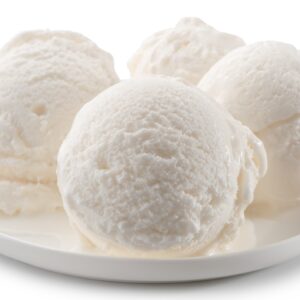A cold, sweet and creamy food known as ice cream has been produced and enjoyed for centuries and across continents. This sweet that became popular in many countries is not just an instant gratification for the taste buds, but also the result of human creativity and advancements in cooking techniques.
If tasty food is your passion, discover visa sponsorship hospitality vacancies to start an exciting career. These roles not only allow you to indulge in your love for cooking but also provide the chance to work in diverse environments worldwide, exploring new cuisines.
Ancient Beginnings: The Origins of Ice Cream
According to archeological evidence, ice cream has its roots in China, where it was made as early as 2000 BC. It is noted from history that Chinese people used to make a concoction that e can be described as the rudimentary ice cream by mixing milk and rice and then packing it in snow to freeze. The ancient Roman Emperor Nero who ruled between 54 and 68 AD also had a taste for what could be described as ice cream by modern standards although it was made with snow collected from the mountains and fruits and honey to flavor it.
Medieval Innovations: From the Middle East to Europe
The Middle Eastern region has contributed to the evolution of ice cream in a unique manner. Sharbat or “Sorbet” is one of the most famous desserts that originated in the 10th century in Arab countries, where they had a frozen dairy product which was converted to that of a modern sorbet by using sugar, fruits and nuts which is then frozen to be taken as a dessert. It later shifted to Europe through trade and the exchange of other culture-related activities.
Marco Polo introduced stories and recipes from China to Italy in the 13th century and this somehow changed the Italian culinary practices. During the 16th century, Italian chefs started making the smoother form of ice cream known as “gelato” from milk, sugar, and spices/flavoring agents.
The Renaissance of Ice Cream: Europe’s Embrace
Europe’s nobles and elite takers started to prefer ice cream in the 17th century. France largely contributed to the invention and popularization of ice cream. In 1692, the chef from France named François Massialot described a recipe for “fromage glacé” that looked like the current day’s ice cream.
Ice cream’s popularity continued to grow in the 18th century. The first ice cream parlor in America opened in New York City in 1790. Thomas Jefferson, known for his love of fine cuisine, created his own vanilla ice cream recipe, which is preserved today in the Library of Congress.
The Industrial Revolution: Ice Cream for the Masses
The progression of ice cream making through the 19th century led to its democratization. Nancy Johnson invented a hand-cranked freezer in 1843 that helped ordinary folk make their own homemade ice-cream by stirring it until frozen.
Jacob Fussell, a milk dealer from Baltimore, established the first large-scale commercial ice-cream factory in 1851, consequently making it more affordable and available everywhere. The ice cream soda, invented in the 1870s, and the ice cream cone, popularized at the 1904 St. Louis World’s Fair, further cemented ice cream’s place in American culture.
Modern Times: A Global Phenomenon
These days, ice cream is another global industry with billions of dollars to its name. In the U.S., this sector alone brings about $11 billion each year and every American consumes around 23 pounds of ice cream in a year. The range of flavors from vanilla to matcha and lavender, reflect an array of preferences that people have.
Recently, ice cream has been experiencing changes with things like dairy-free as well as low-calorie types emerging so as to suit individuals who are health conscious. Artisanal ice cream parlors provide high end adventures while major labels keep on finding ways of promoting their brands for them not to go unnoticed.
The history of ice cream is a testament to human creativity and the universal desire for indulgence and delight. From ancient China to modern-day parlors, ice cream has evolved into a beloved treat enjoyed by millions. As we savor each scoop, we can appreciate the rich history and cultural significance behind this timeless dessert.
Ice cream’s journey from a luxury for the elite to a ubiquitous treat for all highlights the fascinating ways in which food connects us to our past, our present, and our shared future.
